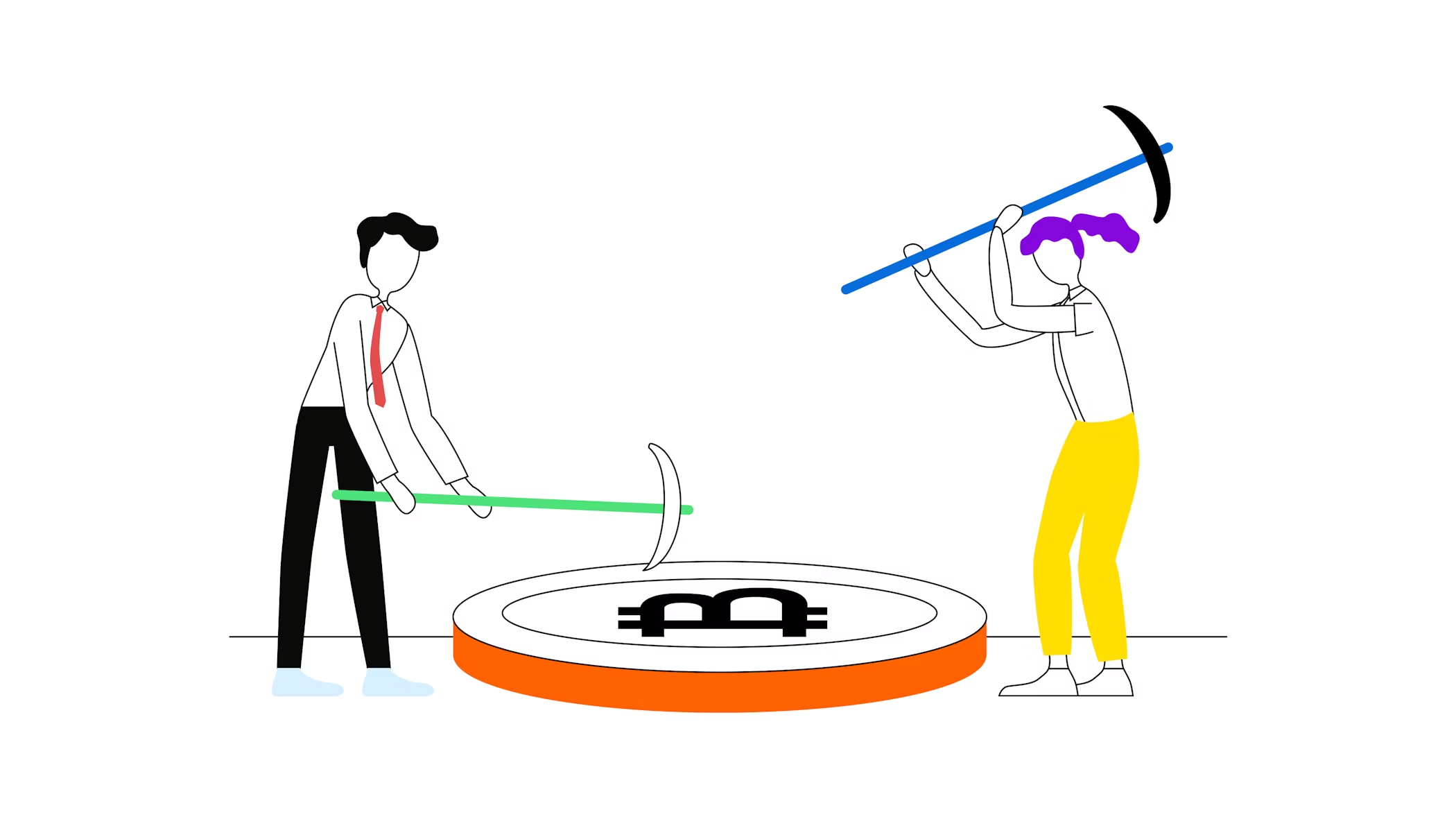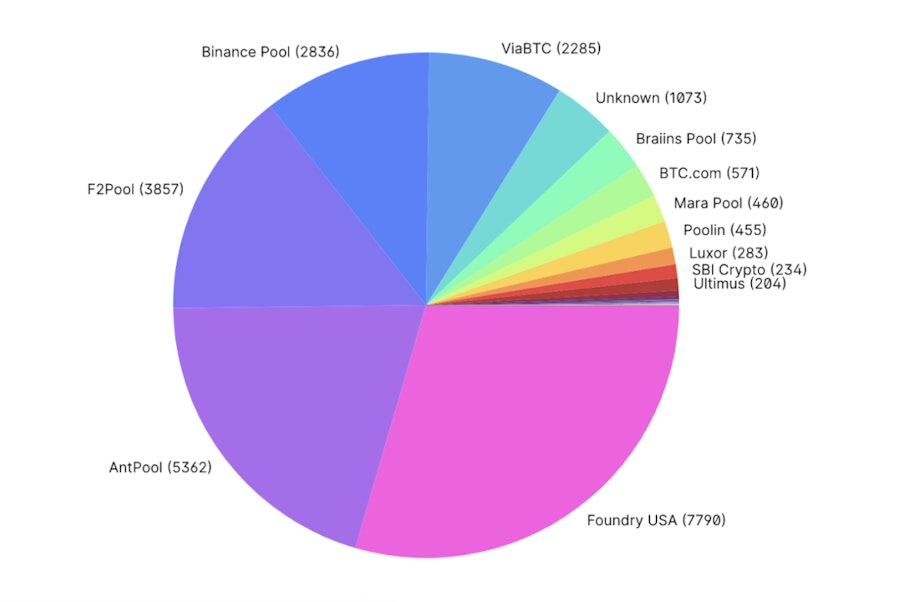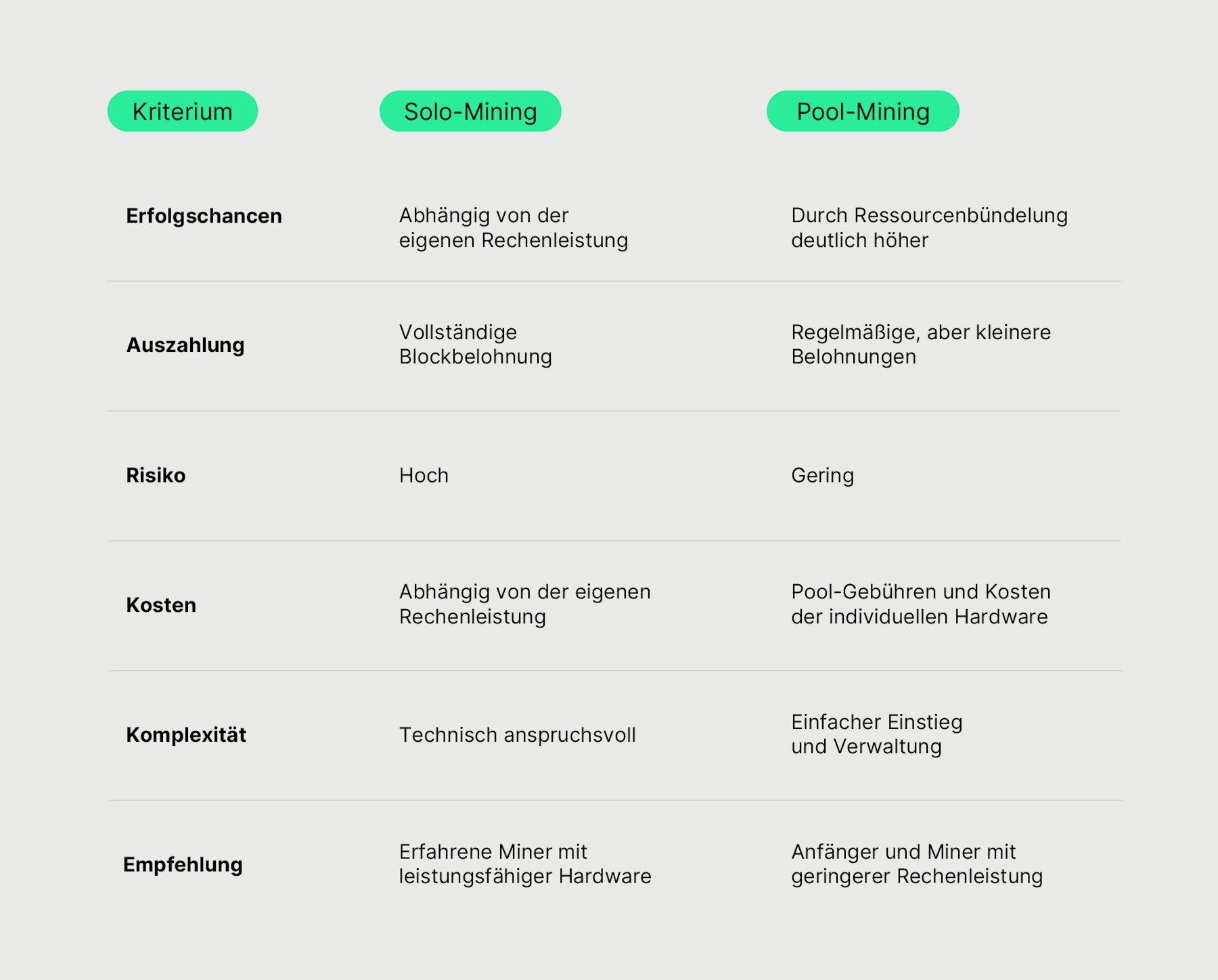
What is the purpose of mining pools and how do they work?
A mining pool is when individual crypto miners join together and pool their resources in order to improve their chances of obtaining a block reward. Rewards for solving blocks are paid out according to how much processing power someone contributed to the pool. So the more processing power, the higher the chances of earning rewards.
Watch this Bitpanda Academy lesson as video
Watch on YouTubeWhy do miners join mining pools?
Bitcoin creator Satoshi Nakamoto envisioned a world in which everyone could participate in the mining process to secure the Bitcoin network and get freshly mined bitcoins as a reward. In reality, things played out a bit differently.
As the Bitcoin network grew, individuals had to invest more and more into their computing power to be able to actually get meaningful rewards from the process. Simultaneously, the type of hardware needed to mine became increasingly complicated and, consequently, hardware costs continued to rise for Bitcoin miners.
In 2010, a user in the BitcoinTalk forum with the username Slush realised that it would be a good idea to join forces with other miners and form a ‘pool’ to increase the chances of receiving block rewards. So, on November 27, 2010 he founded “Slush Pool”, which is run out of the Czech Republic.
The industry of Bitcoin mining
Over the years, Bitcoin mining has actually turned into its own industry. Today, it’s no longer possible to solve a Bitcoin block with a regular computer as the process requires special application-specific integrated circuits, also called ASIC units, specifically designed for the purpose of mining Bitcoin. But events such as Bitcoin halvings highly affect miner revenue and increase the significance of transaction fees.
New to Bitpanda? Get started today!
Sign up hereThe chart above (source: blockchain.com, as of May 2023) shows the current balance of power across the Bitcoin mining space. About ten to fifteen mining pools run the vast majority of the network. Note that each of those pools usually consists of thousands of individual miners from across the world. The exact number of individual computers contributing to the network is hard to tell, but according to a recent estimate [August 2021], around 70,000 computers may be running Bitcoin mining software.
Are you ready to buy cryptocurrencies?
Get started nowIt’s easy to see how the argument could be made that the Bitcoin network is not perfectly decentralised and to question whether true decentralisation is even possible. But as long as the distribution of hashing power is reasonable and individual pools remain well below running 51% of the network, this is good news. The network remains a fair playing field for all participants as long as decentralisation is sufficiently maintained.
DISCLAIMER
This article does not constitute investment advice, nor is it an offer or invitation to purchase any crypto assets.
This article is for general purposes of information only and no representation or warranty, either expressed or implied, is made as to, and no reliance should be placed on, the fairness, accuracy, completeness or correctness of this article or opinions contained herein.
Some statements contained in this article may be of future expectations that are based on our current views and assumptions and involve uncertainties that could cause actual results, performance or events which differ from those statements.
None of the Bitpanda GmbH nor any of its affiliates, advisors or representatives shall have any liability whatsoever arising in connection with this article.
Please note that an investment in crypto assets carries risks in addition to the opportunities described above.

